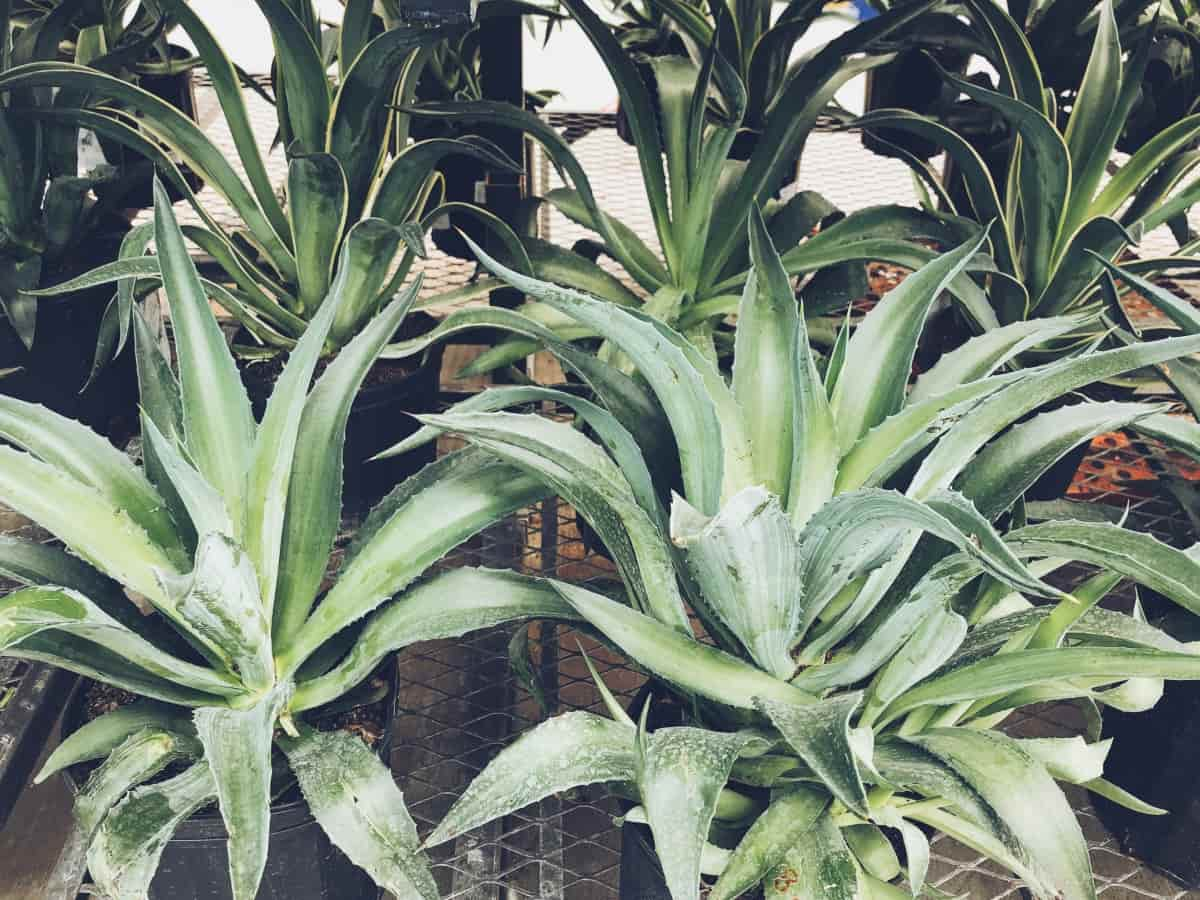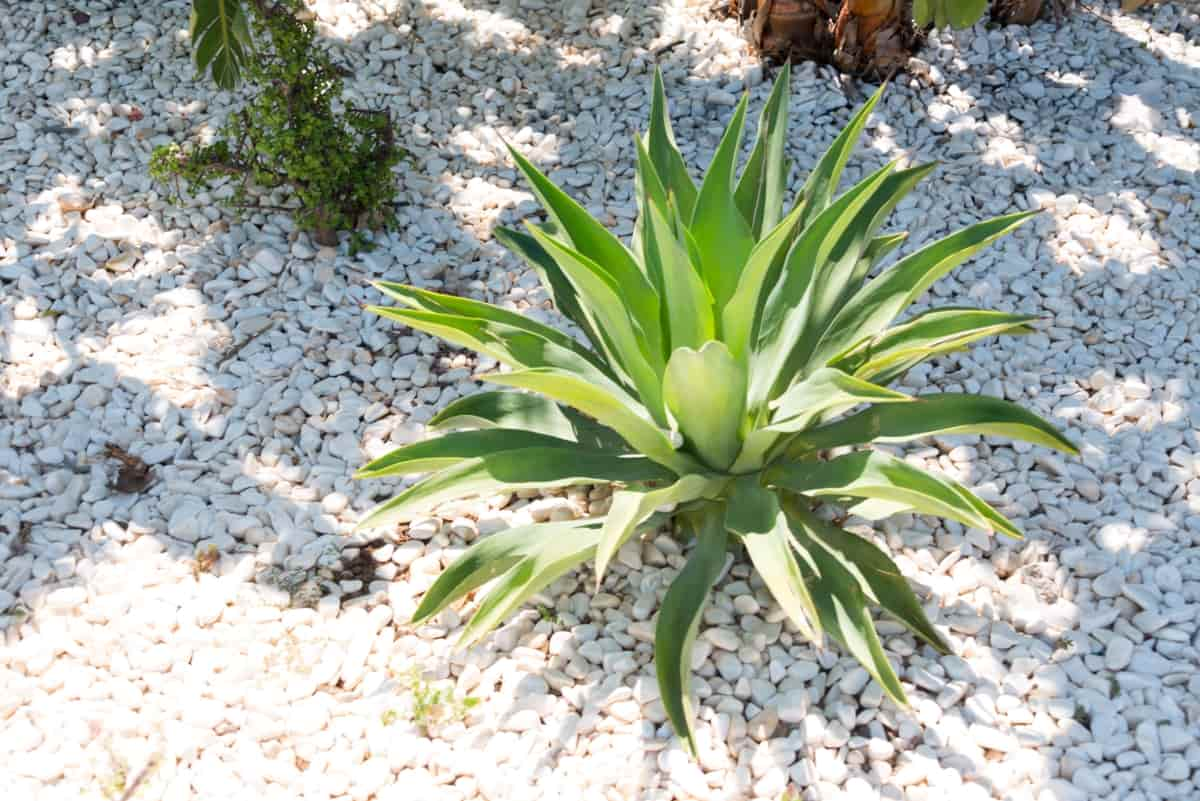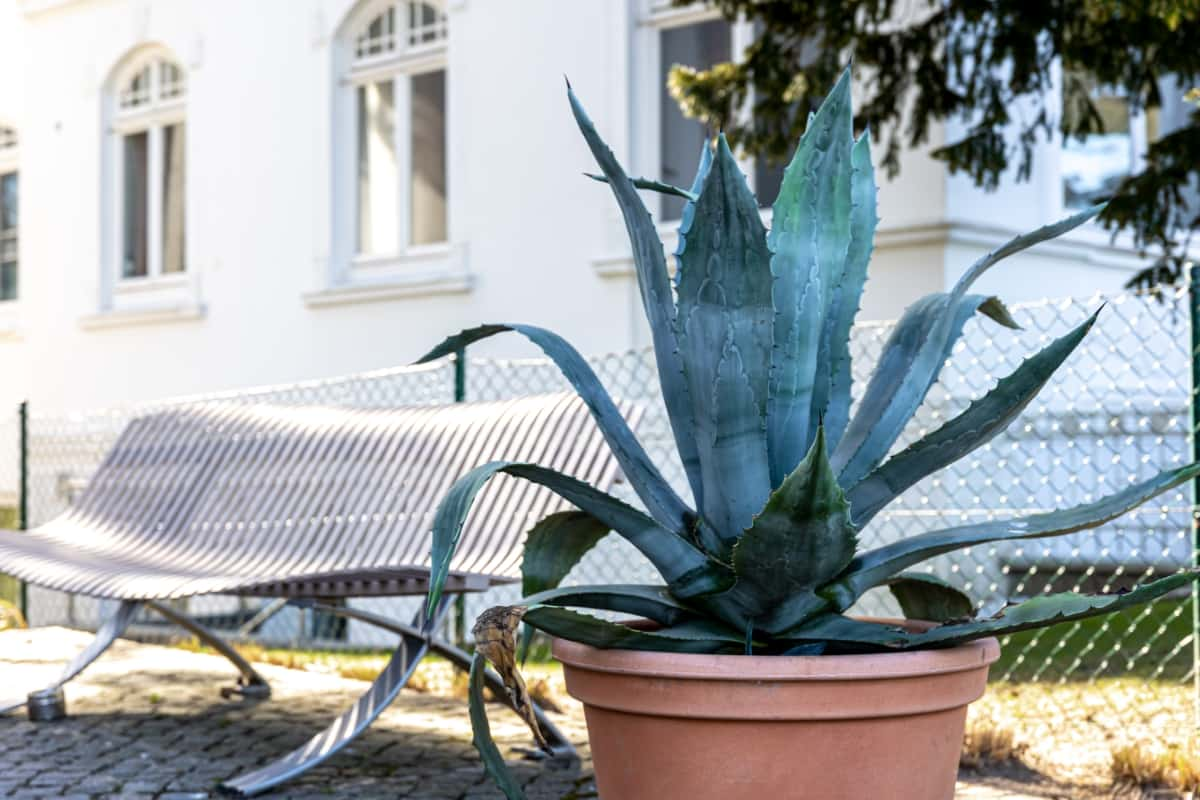Agave plants are known for their striking appearance and resilience, making them popular additions to gardens and landscapes. However, like any other plant, agaves can encounter various problems that affect their health and vitality. This article will explore the causes behind common agave plant problems and provide natural solutions to address them effectively.

Agave Plant Characteristics
Before diving into the specific problems and solutions, it’s important to understand the characteristics of agave plants. Agaves are succulent plants characterized by their rosette-shaped leaves, which are often thick and fleshy. They have a natural ability to store water in their leaves, making them well-suited to arid and semiarid environments.
Producing agave syrup and tequila thrives in arid and semiarid regions. Characterized by its rosette of thick, fleshy leaves that can grow quite large, each leaf ends in a sharp point. Agaves are slow-growing plants that can take between 10 to 30 years to mature and flower only once before dying.
Causes for Common Agave Plant Problems
Root Rot
Root rot is a common problem for agave plants and is often caused by overwatering. Agaves are succulents and are adapted to arid environments, so they are susceptible to root rot when they are exposed to excessive moisture. The roots become waterlogged, leading to their decay and compromising the plant’s ability to uptake nutrients and water. Symptoms of root rot include yellowing or wilting leaves, and in severe cases, the plant can collapse. To address root rot, it is crucial to adjust the watering practices and ensure that the soil has proper drainage to prevent waterlogging.
Agave Snout Weevil Infestation
The agave snout weevil is a destructive pest cause significant damage to agave plants. These weevils lay their eggs inside the plant, and the hatched larvae feed on the agave’s tissues, leading to the eventual decay and death of the plant. Infested plants often exhibit wilting, discolored, or dying leaves. To manage agave snout weevil infestations, it is essential to regularly inspect the plants for signs of infestation and take prompt action to remove and destroy affected plants to prevent the spread of the weevils.
Fungal Diseases
Agave plants are susceptible to various fungal diseases, especially in humid conditions. Common fungal diseases that affect agaves include anthracnose and leaf spots, which manifest as discolored spots or lesions on the leaves. To prevent fungal diseases, it is important to improve air circulation by pruning away dead or crowded foliage. Additionally, avoiding overhead watering and watering the plants at their base can help minimize the risk of fungal diseases.
In case you missed it: Top 12 Homemade Remedies for Rust on Plants: Organic DIY Sprays for Treatment and Prevention

Leaf Scorch
Leaf scorch occurs when agave plants are exposed to intense sunlight or extreme heat. It can lead to the browning or burning of the leaf tips and edges. To protect agave plants from leaf scorch, it is crucial to provide shade during periods of intense sunlight or extreme heat. This can be achieved by placing the plants in strategic locations or using shading materials to protect them from direct sunlight.
Overwatering
Overwatering is a significant issue for agave plants, as it can cause root rot and other fungal diseases. To prevent waterlogging, it is important to allow the soil to dry before watering and ensure that the pots or planting beds have proper drainage. By adjusting the watering practices and monitoring the soil moisture, the risk of overwatering can be minimized.
Underwatering
Agaves, adapted to arid environments, can suffer from dehydration and wilting due to underwatering. This leads to stunted growth and poor health. To combat this, it’s crucial to thoroughly water plants during dry periods and ensure adequate hydration, especially during hot and dry periods.
Nutrient Deficiencies
Agave plants may suffer from nutrient deficiencies, particularly nitrogen and potassium, which can result in yellowing leaves and poor growth overall. Balanced organic fertilizers can provide the essential nutrients that the plants require for healthy growth.
Frost Damage
While agave plants are generally hardy, they can be susceptible to frost damage, especially in colder climates. Freezing temperatures cause damage to the plant, resulting in browning or wilting of the leaves. To protect agave plants from frost damage, it is important to cover them during frosty periods or move them indoors to shield them from freezing temperatures.
Sunburn
Agave plants can experience sunburn when they are exposed to intense sunlight, particularly during hot and dry conditions. Sunburn manifests as discoloration and browning of the leaves. To prevent sunburn, providing shade and protection from direct sunlight is essential. You can achieve this by using shading materials or moving the plants to locations with less intense sunlight.
In case you missed it: Using Sevin Dust on Flowering Plants: Guide for How and When to Apply

Pest Problems
Aside from agave snout weevils, agave plants can be susceptible to other pests, such as aphids, mealybugs, or scale insects, which can cause damage and affect the plant’s health. Using natural pest control like beneficial insects or organic insecticidal soaps can effectively manage pest infestations and safeguard plant health.
Yellowing Leaves
Yellowing leaves in agave plants can be indicative of various issues, including overwatering, underwatering, nutrient deficiencies, or pest infestations. It is important to monitor the plants closely and address the underlying causes of yellowing leaves to ensure their continued health and vitality.
Tips and Solutions in Natural Ways to Fix Common Agave Plant Problems
- Adjust watering practices: Allow the soil to dry before watering and ensure proper drainage to prevent root rot.
- Monitor for agave snout weevils: Regularly inspect the plants for signs of weevil infestation and manually remove and destroy affected plants.
- Improve air circulation: Prune away dead or crowded foliage to promote better airflow and reduce the risk of fungal diseases.
- Provide shade: Shield agave plants from intense sunlight or extreme heat to prevent leaf scorch and sunburn.
- Use organic fertilizers: Apply balanced organic fertilizers to provide essential nutrients and address nutrient deficiencies.
- Protect from frost: Cover agave plants during frosty periods or move them indoors to protect them from freezing temperatures.
- Implement natural pest control: Introduce beneficial insects or use organic insecticidal soaps to manage pest infestations.
In case you missed it: Ultimate Guide to Crafting White Oil Insecticide – A Simple and Effective Recipe for Plant Pests

Conclusion
Agave plants can encounter various problems, but with proper car, attention, these issues can be effectively addressed using natural solutions. By understanding the causes behind common agave plant problems and implementing the provided tips, gardeners can ensure the health and vitality of their agave plants, allowing them to thrive and adorn their gardens for years to come.
- Beneficial Insects in Pest Management
- Natural Solutions for Pest Control in Flower Gardens
- Types of Fungicides Used in Agriculture
- Common Issues in the Fruit Development Stage of Pomegranate Farming
- Fruit Development Issues in Papaya: Easy Solutions and Treatment
- Soil-Borne Diseases and How to Protect Your Plants
- Practices to Prevent Disease Spread in the Garden
- From Wilted to Thriving: How to Treat Root Rot Naturally in Houseplants
- Natural Remedies to Cure Brown Spots on Fig Tree Leaves